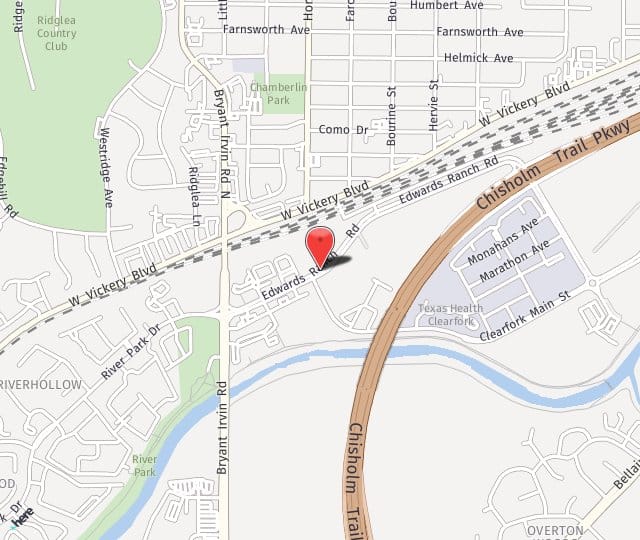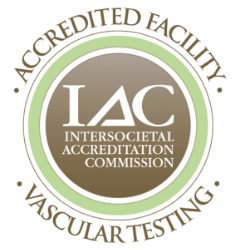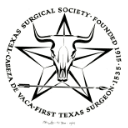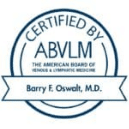Surface Sclerotherapy
Tiny clusters of purple, red, and blue lines on your thighs, calves, and ankles, called spider veins, often appear during pregnancy, while spending long hours at work standing on your feet, or simply due to aging. These small veins form in the same way larger varicose veins do, but they are close to the surface of the skin, so are easily seen. They appear most commonly on the calves and ankles, but can also make an unwelcomed appearance on the face.
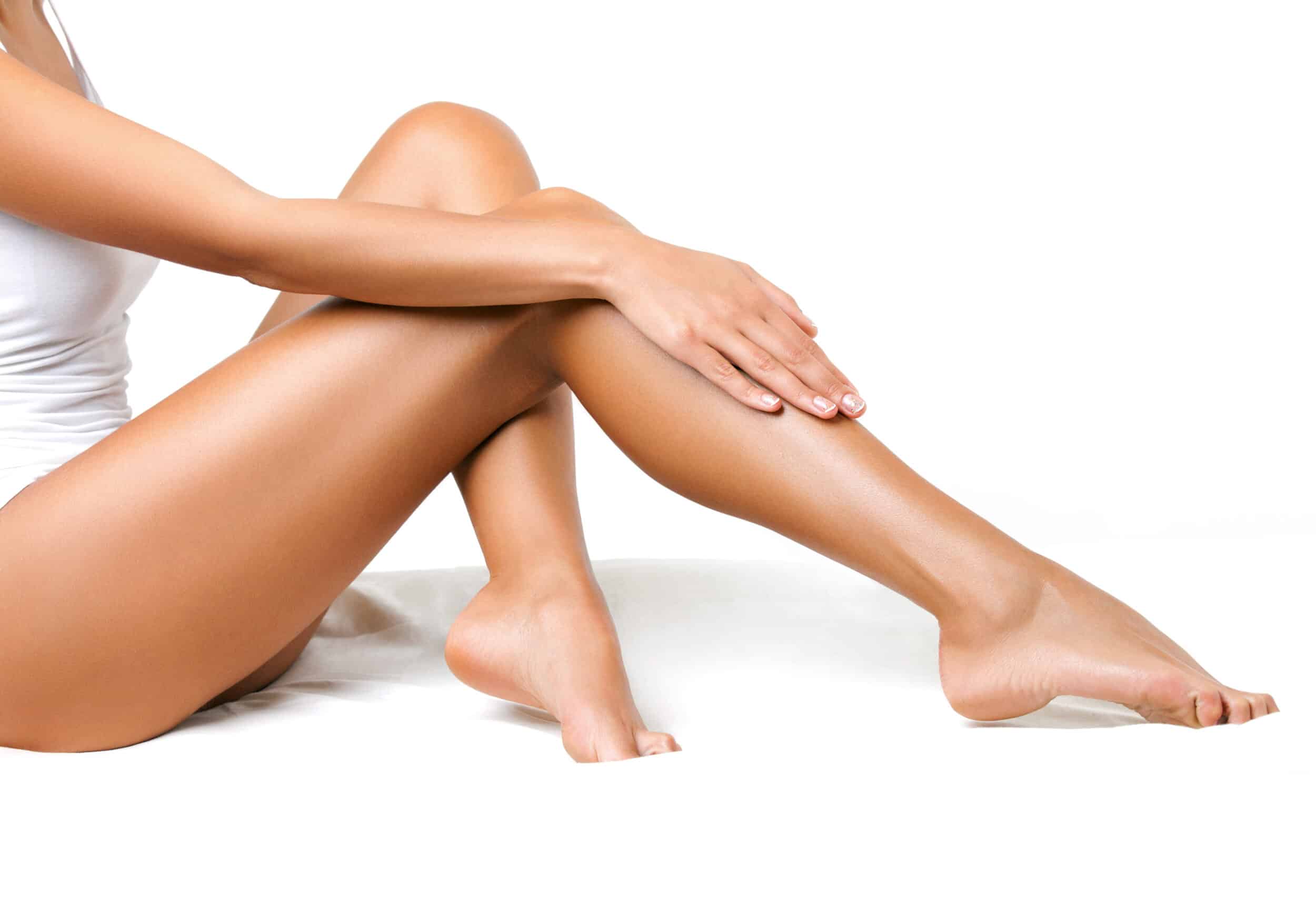
Dr. Oswalt's nurse/PA uses sclerotherapy to remove these unsightly and sometimes painful veins from the legs.
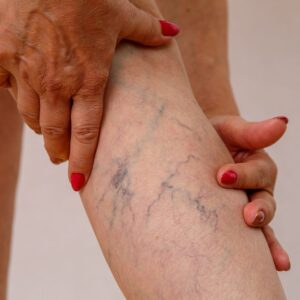
Spider veins are small superficial clusters of veins that are close to the skin's surface. Because they carry dark, deoxygenated blood, they are visible on the skin's surface. As noted above, they are more common in women, due to hormones and pregnancy, but can also occur in men, as they're also caused by genetics, aging and obesity.
As we age, everything on our body seems to slacken and become a little weaker, including the veins in our legs whose sole responsibility is to return the blood from our legs back to our heart. They do this with the help of our calf muscles that help pump the blood upward as we're walking. When we stop, sit or stand, gravity takes over and pulls the blood back downward. One-way valves in the veins help to keep that from happening. When those valves begin to malfunction, the blood is pulled downward and pools in the veins further weakening them, causing venous insufficiency or venous reflux, which results in varicose and spider veins. The smaller, clustered veins that can be seen on the surface are called spider veins. The larger veins that can bulge and push up the skin surface are known as varicose veins.
Sclerotherapy is a simple procedure where foamed medication is injected directly into the vein. Treatment sessions take 20-25 minutes per leg, but could be shorter if you have just a few spider veins. The number of treatments needed will depend on the amount of spider veins you have and your individual response to the treatment. It is rare that one treatment is sufficient, and multiple treatments are commonly required to achieve the desired outcome. If you have unsightly spider veins, there aren’t really any restrictions on these procedures. Reactions to the sclerosant are virtually nonexistent.
Sclerotherapy was first developed in the 1930s but has stood the test of time, and is still the best option for treating spider veins on the legs. Really, the only change in the treatment is the sclerosants used. In the past it was typically saline solution that was injected into the spider veins. Today, in addition to hypertonic saline, sodium tetradecyl sulphate and polidocanol are also used.
The nurse uses a very tiny needle for sclerotherapy. Spider veins are near the surface of the skin, so the injections to address them do not need to be at much depth. Because of this, patients usually say the feeling of the procedure is akin to that of a pinprick.
At the start of your session, we will discuss the spider veins you’d like to remove, then inject the sclerosant solution directly into the veins. The solution irritates the walls of the veins, causing them to collapse and close. The body redirects the blood through healthy veins, and over the next few weeks, will break down and absorb the treated veins.
After sclerotherapy, there are no major restrictions. We will ask you to wear compression stockings (20-30mmhg) for 7 days. This helps the body start the process of absorbing the closed-off veins. Otherwise, walking and moderate exercise is fine immediately after your procedure. You will want to avoid strenuous exercise for about one week. You don’t want to really push increased blood circulation through your legs for these first few days.
As mentioned above, tiny needles are used for sclerotherapy treatments. And because spider veins are relatively superficial, the injections are shallow. Patients equate the feeling of each injection to a pinprick. They are not painful, and treating a few clusters only takes a few minutes. These are simple, easy-to-take treatments. That’s why there’s really no reason to live with spider veins that make you avoid wearing shorts, dresses and swimsuits. That’s no way to live in sunny Fort Worth!
As mentioned above, sclerotherapy has been around since the 1930s. It has been used to treat tens of millions of spider veins, and it continues to be the treatment method of choice. There is a very low risk of reactions to the sclerosant solution.
After your session, you may have some redness at the injection sites and possibly some minor irritation, but this passes quickly. There may be some slight bruising from the injections, but this resolves within a week or so.
What to Expect
At your consultation, our venous expert will customize a treatment plan that is right for you. The number of treatments needed differs from patient to patient, depending on how many veins there are, and the patient’s expectations. For best results, three or four sessions are needed for most patients. Treatment sessions are scheduled at four-week intervals until the desired results are achieved.
What Causes Spider Veins?
Spider veins can develop due to a variety of factors, including:
- Genetics: If your family members have spider veins, you are also more likely to develop them.
- Age: The likelihood of developing spider veins increases with age as the valves in your veins weaken.
- Hormonal Changes: Hormonal influences during pregnancy, menopause, or from birth control pills can increase the risk of spider veins.
- Lifestyle Factors: Prolonged standing or sitting can impede blood flow and contribute to the formation of spider veins.
- Sun Exposure: Excessive sun can cause spider veins, especially on the face.
Understanding these factors can help manage and prevent spider veins, though treatment might still be necessary to remove existing veins for many.
How Are Spider Veins Different from Varicose Veins?
While both spider veins and varicose veins have similar underlying causes—namely, the malfunctioning of valves within the veins—they differ significantly in appearance and the potential for causing discomfort.
In terms of appearance, spider veins are smaller, fine lines that lay flat against the skin and do not bulge. In contrast, varicose veins are larger, raised, and often look twisted or bulging. Spider veins usually do not cause discomfort, while varicose veins can be painful and lead to a feeling of heaviness or even cramping in the legs.
How Do I Prepare for Sclerotherapy?
At Fort Worth Vein Center, we want to ensure that your treatment is as effective and comfortable as possible. Here are some steps you can take to prepare for your spider vein treatment:
- Avoid Certain Medications: Prior to treatment, avoid taking aspirin, nonsteroidal anti-inflammatory drugs (NSAIDs), or other blood-thinning medications, as these can increase bruising. Always consult with your physician before stopping any medication.
- Skip Lotions or Creams: On the day of treatment, do not apply lotion, sunscreen, or oil to the areas being treated, as clean skin is necessary for most procedures.
- Wear Comfortable Clothing: Choose loose, comfortable clothing on the day of your procedure. Bring compression stockings since they can help reduce swelling and improve the healing process once your procedure is done.
Are the Results of Sclerotherapy Permanent?
In most cases, veins treated with sclerotherapy will fade and not return. However, sclerotherapy does not prevent new veins from forming. Ongoing maintenance treatments may be necessary to manage new spider veins or varicose veins that can develop over time. However, you may be able to reduce future spider veins by elevating your legs while resting, exercising, avoiding tight clothing that restricts blood flow, and protecting your skin from the sun.
Why Patients Choose Fort Worth Vein Center
Led by Dr. Barry Oswalt, our practice is the top choice for patients in the Fort Worth area. We often receive referrals from other vein clinics, which is proof of our team’s expertise and medical knowledge. Our sole focus is vein treatments, so we can be trusted to address your cosmetic concerns safely and efficiently with complete respect and professionalism.
Schedule Your Appointment Today
For more information on surface sclerotherapy and spider veins, contact Fort Worth Vein Center today at 817-536-9600 or click here to contact us online.

